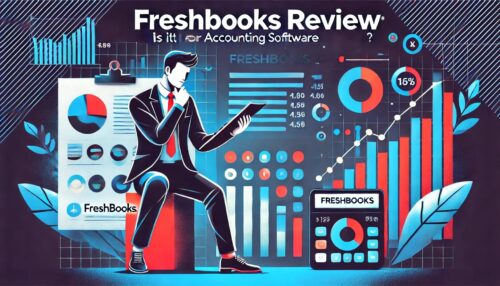Table of Contents
How to make a blog for free and earn money fast? This question crosses the minds of many aspiring bloggers eager to start their journey without breaking the bank.
In this article, you’ll uncover step-by-step strategies, tools, and tips to create a blog for free and transform it into a profitable venture quickly.
1. Choosing The Best Free Blogging Platforms
Selecting the right platform is crucial for starting a successful blog. Free blogging platforms offer beginner-friendly options that eliminate financial barriers. These platforms provide tools and features to help you launch and grow your blog effortlessly.
Why Free Platforms Are Ideal For Beginners
Free blogging platforms are a perfect starting point for aspiring bloggers. They let you experiment without financial risk, offering an accessible way to explore your passion for writing. Plus, they often come with user-friendly interfaces that simplify setup and management.
Free platforms also allow you to focus on creating content rather than dealing with complex coding. Features like pre-designed templates make designing a blog easy, even for non-tech-savvy users. With no upfront costs, you can develop your blogging skills at your own pace.
Many free platforms provide built-in tools to promote your blog, such as basic SEO features and sharing options for social media. These tools enable you to grow your audience organically while learning about digital marketing.
I recommend free platforms because they enable you to test different niches and strategies. You can refine your blog’s focus without worrying about losing money on failed attempts. This approach fosters growth and confidence.
Using free blogging platforms also helps you understand what you truly need when you decide to upgrade. You’ll learn what features are indispensable, preparing you to transition smoothly to paid options if desired.
Comparing Popular Free Blogging Sites For Features
Popular free blogging platforms each offer unique features. Understanding their differences helps you pick the best fit for your needs. Options like WordPress.com, Blogger, and Wix stand out for their usability and functionality.
WordPress.com offers a versatile system with pre-designed themes and essential plugins. It’s great for long-term bloggers because it supports scalability. Blogger, powered by Google, is excellent for simplicity and integrates easily with Google AdSense.
Wix provides drag-and-drop customization for those who want creative freedom. Its intuitive design tools appeal to bloggers who prioritize aesthetics and ease of use. Each platform caters to different needs, from beginner to advanced.
I believe that exploring forums and tutorials for these platforms will also give you insights into user experiences. This knowledge helps you decide which platform aligns with your goals and technical skills.
While some platforms have storage limits, many offer affordable upgrades when you’re ready to scale. I suggest starting with the free version and upgrading only when your blog demands additional resources.
How To Set Up A Free Blog On WordPress.com
Setting up a free blog on WordPress.com is quick and easy. You’ll need an email account to create your profile and choose a blog name. The platform walks you through selecting a theme and customizing your site.
WordPress.com provides free templates that cater to various niches. From travel to tech, you’ll find designs tailored to your blog’s purpose. I recommend spending time personalizing these templates to reflect your brand.
The platform’s dashboard is intuitive, allowing you to publish posts, manage comments, and tweak your design effortlessly. It also provides analytics to track your performance and audience engagement.
While WordPress.com offers a free domain (e.g., yourblog.wordpress.com), consider upgrading to a custom domain once you establish your blog. This makes your blog appear more professional and boosts its credibility.
Adding essential widgets and plugins enhances your blog’s functionality. For example, you can include social media links, contact forms, or email subscription options—all free tools to grow your audience.
Exploring Free Website Builders With Blogging Features
Free website builders often double as blogging platforms, providing versatility for your online presence. Options like Squarespace, Weebly, and Wix stand out for their combined website and blog-building capabilities.
Squarespace is great for bloggers who want sleek, professional designs. While its free trial is limited, it’s worth exploring to understand how premium features can elevate your blog.
Weebly offers a free plan with drag-and-drop features and basic e-commerce integration. I recommend it for bloggers interested in selling products alongside their content.
Wix stands out for its artificial design intelligence (ADI) tool, which guides you through creating a blog tailored to your preferences. You can start for free and later expand to paid plans if needed.
Experimenting with these platforms helps you identify the features you value most. By doing so, you’ll create a blog that looks professional, engages readers, and sets you apart from competitors.
2. Crafting A Winning Blog Name And Niche

Choosing a memorable blog name and niche sets the foundation for your blog’s success. It determines your brand identity and ensures your content resonates with the right audience.
How To Choose A Blog Name That Stands Out
A standout blog name is memorable, easy to spell, and reflects your niche. I suggest brainstorming words that represent your blog’s purpose and combining them creatively. For example, blend industry terms with personal touches for uniqueness.
Test your ideas with friends or colleagues to gauge their appeal. Feedback ensures your name connects with your target audience. A compelling name grabs attention and helps your blog stand out in crowded spaces.
Ensure your blog name aligns with your tone and style. A playful blog might benefit from humorous or quirky names, while professional blogs need sophisticated titles. This alignment strengthens your branding.
Avoid overused or generic terms that make your blog blend in rather than stand out. For example, instead of “Fitness Blog,” try something like “Fitness Voyage” or “Fit Quest.” These add a personal and intriguing touch.
Identifying Profitable Niches For Blogging Success
A profitable niche combines your passion with market demand. Research trends and audience interests to pinpoint topics people are eager to explore. Popular niches include health, tech, and personal finance.
I advise starting with a niche you’re passionate about. This makes creating content enjoyable and sustainable. Passion-driven blogs often resonate better with readers, leading to higher engagement.
Use tools like Google Trends and keyword research tools to confirm your niche’s viability. These platforms reveal search volumes and related topics, helping you identify lucrative blogging opportunities.
Avoid overly saturated niches unless you have a unique perspective or voice. Standing out in a competitive field requires creativity and innovation, so weigh your options carefully.
Free Tools For Brainstorming Blog Ideas
Several free tools simplify the brainstorming process. Google’s Keyword Planner, Ubersuggest, and Answer the Public are excellent for generating blog ideas based on popular queries.
I recommend using mind-mapping apps like MindMeister to organize your ideas visually. These apps help you connect related concepts, leading to a clearer focus for your blog.
Online forums and social media groups are great places to find questions your audience wants answered. Engage with these communities to refine your topics and tailor them to real-world interests.
Testing your ideas with blog title generators can spark creativity. Tools like Portent’s Idea Generator add playful twists to your concepts, making them more engaging and shareable.
Ensuring Domain Name Availability Without Cost
Checking domain availability is vital when naming your blog. Use free tools like Namecheap or GoDaddy to search for domains matching your blog name.
A free domain often includes platform branding (e.g., yourblog.wordpress.com), which is fine for beginners. I suggest upgrading to a custom domain as your blog grows, as it enhances credibility.
Domain extensions like .blog or .online are affordable alternatives to .com. They maintain professionalism while offering greater availability for your chosen name.
Claiming your domain early prevents others from taking it. Even if you start with a free platform, reserving your domain ensures consistency when you scale up.
3. Designing An Eye-Catching Free Blog Layout
A visually appealing blog layout keeps readers engaged and encourages them to explore your content. With free tools and themes, you can create a professional design that reflects your brand while providing an enjoyable user experience.
Tips For Selecting The Best Free Blog Themes
Choosing the right free blog theme lays the foundation for a great design. Look for themes that align with your niche, are responsive, and offer clean layouts. Simple designs often perform better, keeping readers focused on your content.
I suggest prioritizing themes optimized for mobile devices. Since a large portion of web traffic comes from smartphones, a responsive design ensures readers can access your blog seamlessly. Themes marked as “mobile-friendly” are a safe bet.
Pay attention to customization options in the free themes. Features like adjustable fonts, customizable colors, and built-in widgets allow you to make your blog unique without spending a dime.
Themes with built-in SEO features can enhance your blog’s visibility. I recommend checking for lightweight themes that load quickly and improve the user experience. Slow websites risk losing visitors.
Preview multiple themes before finalizing your choice. Many platforms allow you to test how your blog will look with different themes, helping you make an informed decision that matches your vision.
Customizing Free Themes To Suit Your Niche
Customizing your theme gives your blog a personal touch. Free blogging platforms often provide tools for changing colors, fonts, and layouts. Tailor these elements to align with your niche and create a cohesive visual identity.
I recommend using your brand colors consistently throughout your blog. A unified color scheme strengthens your blog’s branding and makes it visually appealing. Tools like Canva can help you choose complementary palettes.
Custom fonts can also add personality to your blog. Select readable fonts that reflect your style and tone. Pairing two fonts—one for headings and one for body text—creates a polished look.
Headers, footers, and sidebars should be optimized for user experience. I suggest including essential elements like a search bar, category links, and social media icons in these sections for better navigation.
Images are another critical aspect of customization. Choose visuals that resonate with your niche and audience. Free resources like Unsplash or Pexels offer high-quality images to enhance your blog design.
Incorporating User-Friendly Navigation Features
User-friendly navigation helps readers find content quickly and improves their overall experience. Clear menus, intuitive layouts, and accessible links are key components of a well-designed blog.
Organize your menu into logical categories that reflect your blog’s content. For instance, a food blog might have sections for recipes, reviews, and tips. I suggest keeping menus simple to avoid overwhelming readers.
Breadcrumb navigation is a helpful feature to guide readers through your site. This trail shows users their location within your blog, making it easier to navigate back to specific pages.
Internal linking improves both navigation and SEO. Include links to related posts within your content, encouraging readers to stay on your site longer. I often use anchor text naturally within sentences for seamless integration.
Place a “back to top” button on longer pages. This small addition enhances usability, especially for mobile users scrolling through extensive content. Readers appreciate these thoughtful details.
Free Plugins To Enhance Blog Design And Functionality
Plugins add extra features to your blog without requiring coding knowledge. Free plugins can enhance design, optimize performance, and improve user engagement.
I recommend starting with plugins that focus on speed optimization. Tools like Wp Rocket (for WordPress) help your site load faster, reducing bounce rates and keeping readers engaged.
Social sharing plugins make it easy for readers to share your posts. Popular options like AddToAny integrate seamlessly with most themes, encouraging wider reach for your content.
For design, page-builder plugins like Elementor offer drag-and-drop functionality. These tools let you create unique layouts tailored to your preferences without spending hours on coding.
Security plugins are equally important, even for free blogs. Plugins like Wordfence protect your site from potential threats, giving you peace of mind while you focus on content creation.
4. Writing Engaging Content To Attract Readers

Creating compelling content is the backbone of any successful blog. Engaging posts keep readers coming back and help establish your authority in your niche, turning casual visitors into loyal followers.
How To Create Valuable Content For Your Audience
Valuable content addresses your readers’ needs and offers practical insights. To connect with your audience, I suggest researching their interests and crafting posts that solve their problems or answer their questions.
Use storytelling to make your content relatable. Sharing personal experiences or anecdotes builds a connection with readers and adds a unique touch to your blog. It also makes your advice more actionable.
Keep your content actionable by including step-by-step guides or tips. I believe readers appreciate tangible takeaways that they can immediately apply in their own lives or projects.
Be consistent in delivering high-quality content. Whether you’re posting once a week or daily, maintaining a schedule keeps your audience engaged and builds anticipation for your next post.
Finding Free Tools For Keyword Research And SEO
Free tools make keyword research accessible to everyone. Platforms like Google Keyword Planner, Ubersuggest, and SEMrush offer insights into popular search terms to help you optimize your posts.
I recommend starting with Google Keyword Planner to find search phrases relevant to your niche. Focus on long-tail keywords that have lower competition but higher intent, making them easier to rank for.
Ubersuggest provides keyword suggestions, search volume data, and difficulty scores. These metrics help you prioritize which keywords to target for maximum impact on your blog traffic.
Incorporate your primary keyword naturally within headings, subheadings, and body text. Avoid overusing it, as search engines favor content that reads smoothly and authentically.
SEO plugins like Yoast (for WordPress) guide you in optimizing posts. These tools evaluate your content for readability and keyword usage, ensuring your blog meets SEO best practices.
Structuring Blog Posts For Better Readability
Readable posts keep readers engaged and encourage them to explore your blog further. A clear structure with headings, subheadings, and short paragraphs makes content easy to digest.
Break your posts into sections using descriptive subheadings. I suggest using H2, H3, and H4 tags strategically to organize content, ensuring readers can quickly find the information they need.
Bullet points and numbered lists are excellent for presenting complex information. These formats make details stand out and are particularly effective for how-to guides or tips-based content.
Use white space to your advantage. Spacing between paragraphs and sections creates a cleaner layout, improving readability and reducing eye strain for readers.
Incorporate visuals like images, infographics, or charts to complement your text. These elements break up large chunks of text and provide additional context for your content.
Free Content Templates For Faster Writing
Content templates streamline the writing process and improve efficiency. Free resources like HubSpot’s Blog Ideas Generator and CoSchedule’s Headline Analyzer are great starting points for crafting compelling posts.
Templates for listicles, how-to guides, and reviews provide a foundation for your content. They include pre-structured layouts that help you focus on your message rather than formatting.
I suggest customizing templates to reflect your unique style and tone. A personal touch adds authenticity to your posts, making them more engaging for readers.
Collaborate with other bloggers or use templates to refine your ideas. Group brainstorming can inspire fresh content angles, ensuring your posts remain relevant and valuable.
Evaluate the performance of template-based posts using analytics tools. Tracking metrics like engagement and time-on-page helps you identify which formats resonate most with your audience.
5. Driving Traffic To Your Blog Without Spending Money
Driving traffic to your blog is essential for building a loyal readership. Thankfully, there are numerous cost-free methods to grow your audience, from leveraging social media to using proven SEO strategies that increase your blog’s visibility.
Effective Ways To Use Social Media For Blog Promotion
Social media platforms are excellent tools for promoting your blog without any expense. They provide a space to connect with readers, share updates, and reach new audiences organically through posts, groups, and strategic interactions.
Start by identifying the platforms where your target audience spends time. For instance, Instagram and Pinterest work well for visual content, while LinkedIn and Twitter suit professional or educational blogs. Focus your efforts where engagement is highest.
Consistency is key. I suggest maintaining a regular posting schedule to keep your audience engaged. Share links to your latest blog posts, offer sneak peeks, or ask interactive questions to foster a sense of community around your blog.
Join relevant groups or communities where your niche is actively discussed. Participating in these conversations without being overly promotional builds trust. When appropriate, you can share your blog as a resourceful link to solve specific problems.
Don’t forget hashtags and trends. Using the right hashtags increases your content’s discoverability. I recommend experimenting with different hashtags and tracking which ones bring the most engagement to optimize your strategy.
Utilizing Free SEO Techniques For Organic Growth
Free SEO techniques are a game-changer when it comes to boosting organic traffic. Optimizing your blog for search engines ensures your content reaches the right people without paying for ads.
Keyword research is foundational. Use free tools like Ubersuggest or Google Keyword Planner to identify terms your audience is searching for. Focus on long-tail keywords—they’re easier to rank for and target specific reader interests.
Ensure your blog posts are structured for readability. Use headings, subheadings, and bullet points to make content easy to scan. I believe adding meta descriptions and alt text to images also enhances your blog’s SEO performance.
Internal linking is another effective strategy. Link to related posts within your blog to keep readers engaged and encourage them to explore more of your content. This also improves your site’s authority in search rankings.
Submit your blog to search engines like Google and Bing for indexing. These free tools help ensure your blog appears in search results, increasing your chances of being discovered by potential readers.
The Power Of Guest Posting On Related Blog
Guest posting is a highly effective way to grow your audience and establish authority in your niche. It involves writing posts for other blogs that link back to your site, attracting new readers who value your expertise.
Begin by identifying blogs in your niche with an engaged audience. I suggest reaching out to bloggers who accept guest posts, offering unique and valuable content tailored to their readers’ interests.
Craft a compelling pitch that highlights the benefits of your guest post. Emphasize how your content will add value to their audience. A personalized email with clear ideas increases the chances of your pitch being accepted.
Include links to your own blog within the guest post, ideally in a non-promotional, helpful way. For instance, you can link to a detailed guide or resource that complements the post’s topic.
Guest posts not only drive traffic but also improve your blog’s SEO. Backlinks from reputable sites signal to search engines that your blog is credible, helping you rank higher in search results.
Free Email Marketing Strategies To Build An Audience
Email marketing is a powerful way to connect with your audience and keep them coming back to your blog. Free email marketing tools like Aweber and ConvertKit make it easy to get started without upfront costs.
Create an email list by offering a free incentive, such as an e-book, checklist, or exclusive content. Readers are more likely to subscribe when they see immediate value in joining your list.
Segment your audience to send personalized emails. For example, if you blog about multiple topics, categorize subscribers based on their interests. This ensures they receive content that resonates with them.
I suggest focusing on engaging subject lines. Catchy headlines increase the chances of your emails being opened. Keep your emails concise and include clear calls to action, such as links to your latest blog posts.
Consistency is important. Aim to send newsletters regularly but avoid overwhelming subscribers. Weekly or bi-weekly updates are often ideal for maintaining engagement without appearing spammy.
6. Monetizing Your Blog Quickly With Free Methods

Monetizing your blog doesn’t have to involve hefty investments. There are plenty of free methods to start earning money quickly, from affiliate marketing to selling digital products or leveraging ad revenue.
How To Start With Affiliate Marketing For Free
Affiliate marketing is a beginner-friendly way to monetize your blog. It involves promoting products or services through unique links and earning a commission for every sale made through your referral.
Begin by joining affiliate programs that align with your blog’s niche. Programs like Flexoffers and ShareASale are free to join and offer a wide range of products to promote.
Choose products you genuinely recommend. I believe authentic recommendations resonate better with readers and lead to higher conversions. Writing honest reviews or tutorials featuring these products works well.
Incorporate affiliate links naturally into your content. Avoid overloading your posts with links, as this can feel spammy. Focus on providing value first and weaving links into relevant sections.
Track your affiliate performance using free tools provided by the programs. This data helps you refine your strategies, such as which products to promote or where to place links for better engagement.
Earning From Sponsored Posts Without Paid Ads
Sponsored posts offer another way to earn money while providing valuable content. Brands pay you to feature their products or services in your blog, which can be lucrative as your readership grows.
Focus on building an engaged audience first. Brands are more likely to collaborate when they see your readers are active and interested in your content. Showcase your niche expertise to attract partnerships.
Reach out to smaller brands that align with your blog’s focus. I suggest highlighting how your blog can help them reach their target audience. Personalizing your pitch makes a strong impression.
Create honest, informative posts that showcase the sponsor’s product authentically. Readers value transparency, so make it clear when content is sponsored while ensuring it remains helpful and unbiased.
Negotiate compensation based on your blog’s reach and engagement. Even if you’re starting small, sponsored posts can provide consistent income and strengthen your blog’s authority.
Creating Free Digital Products To Sell On Your Blog
Selling digital products is a fantastic way to monetize your blog without upfront costs. These products can include e-books, templates, or printable resources tailored to your audience’s needs.
Identify what your readers value most. For instance, a food blog could offer recipe e-books, while a fitness blog might sell workout plans. I recommend using free tools like Canva to create polished products.
Offer a free sample or preview to entice readers to purchase the full product. This builds trust and demonstrates the quality of what you’re offering, increasing the likelihood of sales.
Host your digital products on free platforms like Gumroad or Payhip. These sites handle transactions and delivery, making the process seamless while saving you money on e-commerce tools.
Promote your products through blog posts, social media, and email newsletters. Highlight the benefits and features of your products to show readers how they solve specific problems or add value.
Setting Up Ad Revenue Streams With Free Tools
Ads are another straightforward way to earn money from your blog. Signing up for free ad networks like Adsterra allows you to display ads and earn revenue based on clicks or impressions.
Adsterra is user-friendly and requires minimal setup. Once approved, you can place ads on your blog using code snippets. I suggest choosing placements that don’t disrupt the reading experience.
Experiment with ad types to see which performs best. Display ads, text ads, or video ads each have unique advantages, so analyze your audience’s preferences and engagement with different formats.
Ad revenue grows with traffic, so focus on driving more visitors to your blog. Combine SEO strategies and social media promotion to attract a steady flow of readers.
Monitor your earnings through the ad network dashboard. Free tools like Google Analytics also help you identify high-performing pages, allowing you to optimize ad placements for better revenue.
7. Leveraging Free Analytics To Boost Earnings
Free analytics tools provide valuable insights into your blog’s performance, helping you make informed decisions to maximize earnings. They track traffic, engagement, and revenue metrics, offering actionable data to refine your strategies and grow your blog effectively.
Tracking Blog Traffic Using Free Analytics Tools
Tracking blog traffic is essential for understanding how your content performs. Free tools like Google Analytics and Jetpack Stats provide detailed insights into visitor behavior, helping you identify what works and what needs improvement.
Google Analytics offers a comprehensive overview of your traffic sources, such as organic search, social media, or direct visits. I suggest paying attention to these metrics to focus on channels that drive the most traffic to your blog.
Jetpack Stats is perfect for beginners. It delivers straightforward data on daily views, top posts, and referral sources. If you’re starting out, this tool can help you track your blog’s growth without overwhelming you with details.
Traffic spikes can reveal trends or successful promotions. I recommend noting which posts perform well during these periods. Use this data to replicate similar strategies or create more content on trending topics.
Monitoring visitor demographics helps tailor your content to your audience’s preferences. Knowing your readers’ age, location, and interests makes it easier to create engaging posts that resonate with their needs.
Analyzing Reader Behavior To Optimize Content
Analyzing reader behavior uncovers what keeps visitors engaged. Metrics like time spent on page, bounce rate, and click-through rate (CTR) show how well your content meets your audience’s expectations.
High bounce rates often indicate content misalignment or slow loading times. I recommend reviewing pages with high bounce rates to identify potential issues, such as irrelevant keywords or poor formatting.
Heatmaps, available through tools like Hotjar, visualize where users click or scroll. This insight helps you optimize layouts by placing critical information or calls to action where they’re most likely to get attention.
Check which pages have the longest time-on-page. I believe these posts hold valuable clues about what topics or writing styles your readers enjoy most. Create similar content to keep them coming back.
User flow reports show how visitors navigate your blog. Understanding their journey helps you streamline paths to high-priority pages, such as affiliate links, product pages, or subscription forms.
How Free Data Insights Help Maximize Revenue
Free data insights guide your revenue strategies, showing what works and what doesn’t. Analyzing this information helps you identify profitable opportunities and refine underperforming areas.
Affiliate links with high click rates but low conversions might indicate weak product relevance or landing pages. I suggest testing alternative products or revising your reviews to better address your readers’ needs.
Ad performance metrics, available through Google AdSense, reveal which placements or formats generate the most revenue. Experiment with different ad types to discover the optimal setup for your blog.
Traffic sources can impact earnings. For instance, organic traffic often converts better than social media traffic. Focus on improving SEO to attract more organic visitors who are ready to engage.
Content with high engagement often pairs well with monetization efforts. Use free tools like SEMrush to identify similar keywords or topics and create related content to boost your earning potential.
Using A/B Testing To Improve Blog Conversions
A/B testing compares two versions of a page or element to see which performs better. Free tools like Google Optimize make it easy to run tests and gather data on what drives conversions.
Test elements like headlines, call-to-action buttons, or images. Small changes, such as using action-oriented language in your CTA, can significantly impact conversion rates. I recommend running tests for at least a week for reliable results.
Compare layouts to find what keeps readers engaged. For example, a sidebar versus a full-width design may influence how visitors interact with your content. Choose the version that improves user experience and conversions.
Test different affiliate products or links. I believe offering alternative options helps you identify which products resonate most with your audience, leading to higher click-through rates and sales.
Analyze the results to make data-driven decisions. Successful tests provide a blueprint for optimizing your blog, ensuring that every change contributes to better performance and revenue growth.
8. Common Challenges And How To Overcome Them

Blogging comes with its share of challenges, especially when working with free tools and platforms. However, these hurdles can be managed with strategic planning and resourceful thinking to keep your blog thriving.
Avoiding Pitfalls Of Free Blogging Platforms
Free blogging platforms are convenient but come with limitations. Restrictions on customization, storage, and monetization can hinder your blog’s potential. Being aware of these drawbacks helps you work around them effectively.
Some platforms display ads you can’t control, which might distract readers. I suggest focusing on creating engaging content to retain your audience despite these ads. Upgrading later is an option once your blog grows.
Customization options are often limited. To stand out, I recommend using free design tools to enhance your branding. Canva, for instance, allows you to create custom logos and graphics for a unique blog identity.
Storage limits can affect how much content you publish. Use image optimization tools to reduce file sizes and maximize your storage capacity. Focusing on quality over quantity also helps manage space.
Prepare for potential platform changes, such as policy updates. Regularly back up your content so you can migrate to another platform if needed. This ensures your hard work remains safe.
Dealing With Monetization Hurdles Without Spending
Monetizing a free blog can feel challenging due to limited tools. However, creative approaches like affiliate marketing, sponsored posts, and selling digital products can generate income without requiring an upfront investment.
Affiliate programs may have entry requirements. I advise starting with beginner-friendly options like MyLead, which are more accessible and allow you to earn commissions with minimal traffic.
Building credibility for sponsored posts takes time. Showcase your blog’s engagement and niche expertise to attract brands. Even small partnerships can grow into lucrative collaborations as your audience expands.
Creating digital products can seem daunting, but free platforms like Gumroad make the process simple. Start with basic offerings, such as e-books or templates, to build confidence and experience.
Ad revenue might be slow initially. I suggest focusing on increasing traffic through SEO and social media promotion to boost your earning potential over time.
Managing Time Effectively As A New Blogger
Time management is crucial for balancing blogging with other responsibilities. Setting priorities and creating a schedule help you stay consistent and productive, even as a beginner.
Break down tasks into smaller, manageable steps. I recommend dedicating specific days to tasks like writing, editing, and promotion. This keeps you organized without feeling overwhelmed.
Avoid multitasking during creative work. Focus on one task at a time to produce higher-quality content. I find that setting aside uninterrupted blocks of time leads to better results.
Use free productivity tools like Trello or Asana to plan your blog activities. These tools help track progress, set deadlines, and ensure you stay on top of your goals.
Celebrate small wins, like publishing a post or reaching a milestone. These moments keep you motivated and remind you that consistent effort leads to growth, even if results take time.
Growing Your Blog Without Upgrading To Paid Plans
Expanding your blog while staying on a free plan requires creativity. Focus on leveraging free tools, organic strategies, and partnerships to scale up your blog’s reach and impact.
Build connections with other bloggers in your niche. Collaborations, such as guest posts or social media shoutouts, can introduce your blog to new audiences without any cost.
Experiment with content formats to engage different readers. For instance, infographics, videos, or podcasts can attract new visitors who prefer varied media types. Use free tools to create these resources.
Repurpose old content to keep it relevant. Update posts with new information or turn popular articles into downloadable guides. This strategy maximizes your existing resources to attract repeat visitors.
Participate in online communities or forums where your audience spends time. Share your expertise and link to your blog when appropriate, driving traffic while building credibility in your niche.
9. Scaling Up Your Blog For Long-Term Success
Scaling your blog involves planning for growth while staying true to your vision. Focus on building a sustainable strategy that keeps your blog profitable, engaging, and adaptable to future trends.
Planning For Blog Expansion While Staying Cost-Free
Expanding your blog without spending money is possible with careful planning. Set clear goals, such as increasing traffic, diversifying content, or enhancing user experience, to guide your efforts.
Focus on creating evergreen content that remains relevant over time. I suggest prioritizing topics that consistently attract readers and updating them periodically to maintain value.
Leverage free analytics tools to track growth. Identify high-performing posts and use that data to replicate their success. Consistent improvements keep your blog aligned with your long-term goals.
Experiment with new content ideas or niches. Testing smaller projects allows you to explore opportunities without significant risk, ensuring you grow in the right direction.
How To Collaborate With Other Bloggers For Growth
Collaborating with bloggers in your niche builds relationships and drives mutual growth. Shared promotions, guest posts, or joint projects introduce your content to new audiences and enhance your credibility.
Reach out with genuine interest in their work. I recommend proposing collaborations that benefit both parties, such as co-writing a guide or hosting a webinar on a shared topic.
Engage with their content before pitching. Commenting on posts or sharing their work builds rapport, making them more likely to collaborate with you in return.
Collaborations also improve your blog’s authority through backlinks. When established bloggers link to your content, it signals to search engines that your blog is trustworthy and valuable.
Work with bloggers whose audience aligns with your niche. This ensures their readers will find your content relevant, increasing the likelihood of gaining loyal followers.
Free Courses To Enhance Your Blogging Skills
Free courses offer valuable insights to refine your blogging skills. Platforms like HubSpot Academy, Coursera, and Udemy host free classes on topics ranging from SEO to content marketing.
Focus on courses tailored to your blog’s needs. For instance, I suggest taking SEO courses if you aim to increase organic traffic or learning graphic design basics to improve visuals.
Apply new knowledge immediately. Whether it’s optimizing posts or creating social media strategies, practicing what you learn reinforces skills and boosts your blog’s performance.
Join course forums or groups to network with fellow learners. These connections often lead to collaborations or tips that enhance your blogging journey.
Regularly explore new courses to stay updated on industry trends. Blogging is dynamic, and staying informed ensures your content remains competitive and relevant.
Turning A Free Blog Into A Sustainable Business
Transitioning your blog into a sustainable business involves consistent effort and strategic decisions. Focus on diversifying revenue streams, building a loyal audience, and continuously improving your offerings.
Develop a monetization plan that combines multiple methods, such as affiliate marketing, sponsored posts, and product sales. I suggest experimenting with various strategies to find what works best.
Engage deeply with your audience to build trust. Respond to comments, seek feedback, and tailor content to their needs. A loyal readership forms the foundation of a sustainable blog.
Set realistic goals for scaling up. For instance, aim to double traffic or revenue within a specific timeframe. These benchmarks keep you motivated and focused on growth.
As your blog evolves, reinvest earnings into tools or upgrades that enhance user experience. While starting free is wise, gradual investments can elevate your blog to professional levels over time.






